Preparations to improve the intestinal microflora in adults. How to restore the intestinal microflora after taking antibiotics? Diet to restore intestinal microflora.
Intestinal dysbiosis - treatment must be correct. Even the best drug from the pharmacy will not help if you do not understand the essence of the formation of intestinal flora. So, how to treat intestinal dysbiosis - a complete guide.
Parse time: 0.4055 s Ad Text
Gray hair at 30 years old, balding hair for a 40-year-old woman, a stroke at 50, a grandfather of 60 with shaking hands or a grandmother with dementia - look for the problem of all this no more than in their unhealthy intestines.
Thus, the described probiotic gives more confidence that its stated properties are indeed confirmed by studies that can be traced to the medical community. In addition, there are no two equally active probiotics, and some interdisciplinary probiotic formulas may have intermittent components.
Selected probiotic strains and their significance in the course of various diseases. Reduce the symptoms of ulcerative colitis for the treatment of bowel movement disorders. Treatment of functional constipation. . It is believed that the best effect is the consumption of probiotics along with the bite of food. It is also important that the temperature of the liquids that we drink from the drug - too hot tea or water, can destroy some of the probiotic bacteria, especially if they do not tolerate high temperatures. To accelerate the action of probiotics, a more favorable environment for the development of bacteria can be created.
Intestine - life boils
About 100 trillion microorganisms live in the human intestine. This means that there are fewer eukaryotic cells (with a nucleus — typical of living organisms — humans, animals, etc.) than there are prokaryotic cells (characteristic of bacteria and archaea — no nucleus).Unfortunately, not all bacteria that live in the intestines are good - many and bad ones. Between the good and the bad there is a constant struggle "for a place under the sun." Depending on which strains prevail, and our health and well-being.
How to choose the right probiotic for you?
This can be achieved by supplementing or probiotic medium. Natural prebiotics include refractory starch, flaxseed, inulin or fiber. Sometimes they are added to drugs - then they will be listed in the probiotic package. The composition of the intestinal microflora is a very individual question. Although many people show similar microbial disorders, they can have large differences in relation to specific strains that are present in excess or deficiency. The selection of “blind” probiotics, based on the symptoms or recommendations of this formulation, may be ineffective or even unfavorable for the intestinal microflora.
In addition, with age, the intestinal microbiota, although it increases in quantity, but becomes less active. Which is also bad.
The main intestinal bacteria responsible for the normal functioning of the whole organism are bifidus and if- bacteria.
The first ones are peculiar policemen - they regulate and maintain the constancy of populations of harmful microbes and promote the growth of full-fledged colibacter (the last function is very important).
Colibacter - this is actually our most hardworking allies. Under the cover of bifido, they produce a variety of a variety of blood factors, synthesize vitamins A, B-7 (biotin), B-12 and K, as well as immune complexes, which are hundreds of times more powerful than all known antibiotics.
The best choice is the so-called. Targeted probiotics - the selection of suitable probiotic strains based on the results of the intestinal microflora, a comprehensive analysis of selected bacterial colonies and fungi in the gastrointestinal tract. The goal of this study is not only to assess the intestinal ecosystem, but also to develop targeted and, therefore, effective and effective probiotic and prebiotic therapy. The test material is a single stool test. Based on the results of the study and associated diseases, a proposal for probiotic supplements is being developed.
Deficiency of these vital vitamins contributes to diabetes, obesity, hair loss, gray hair, eczema, seborrhea, anemia, internal bleeding, ulcers, strokes, cancers, degenerative disorders such as Parkinson's and Alzheimer's disease, as well as common gastrointestinal, respiratory and autoimmune disorders.
The substance they produce is capable of destroy cancer in any stage The experiment was conducted in the 40s and moreover, successfully.
Therapy for each patient is based on recognized medical literature and a specific profile of intestinal microflora disorders. Although the balance of bacteria and fungi in the intestines is important for the health of each person, specific indications for assessing the state of microbes in the intestines and the selection of target probiotics are diseases such as.
Allergies and intolerances; Atopic dermatitis; Hay fever; Bronchial asthma; Urticaria, eczema, contact eczema; chronic fatigue syndrome; Recurrent infections; Prostatitis, vaginitis, vaginosis; Diarrhea and constipation; Acute and chronic fungal infections; Inflammatory skin diseases; obesity; depression. When and who does not give probiotics?
The intestine is home to approximately 11 other types of beneficial bacteria, but their role is not so great.
Healthy intestinal flora is also vital for the prevention of constipation, for maintaining primary immunity (phagocytosis), for protecting the large intestine against colon cancer and for preventing fungal diseases - thrush of the mouth and / or vagina.
Probiotics are undoubtedly a useful supplement that is used in the course of many ailments. Targeted probiotics based on high-quality recipes - with reliable confirmation in scientific studies, properly identified strains and their abundance, will undoubtedly contribute to the restoration of intestinal microflora and improved health. Probiotics - a practical guide in a nutshell, the light and dark side of probiotic bacteria.
Food Forum. At the time of weakened immunity, we recommend more frequent administration of probiotics. Concentrations of probiotic bacterial strains have been developed to meet the specific needs of the cat's digestive system. Carefully selected, high quality ingredients in the preparation of more than 20 years guarantee its effectiveness.
But if after reading this information you came to the conclusion that in order to solve health problems, only E. coli (colibacter) is necessary and sufficient to consume - this is not so.
Bifidobacteria and colibacteria cannot live without each other, moreover, the larger and healthier bifido, the better if they behave.
The effectiveness of probiotic therapy (the common name of beneficial intestinal bacteria or their producers, as well as preparations for restoring the intestinal microflora) does not come soon - no less than 3 weeks later, but in acute cases one can see the useful effect almost immediately.
Stress, antibiotics, allergies or poisoning are some of the many factors that destroy the bacterial flora of the gastrointestinal tract. Unfavorable contributes to intestinal microflora infections and allergies, and also leads to the development of chronic diseases of the gastrointestinal tract, including recurrent diarrhea, metabolic disorders, skin diseases or odor.
Prevention and treatment support
The drug stabilizes the intestinal bacterial flora, a positive effect on the functioning of the immune system. The drug prophylactically uses increases the natural protection against pathogens, effectively prevents food poisoning and infection, reduces the risk of allergies and reduces daily stress. All the health benefits of taking probiotics have been documented in numerous clinical studies.
Continue taking the medicine to restore the intestinal microflora for the first time and depending on the complexity of the processes - at least 3 months to six months or more.
Prebiotics
Preparations of probiotics are best combined with prebiotics - drugs, in fact, are food for probiotics.
These include drugs based on lactose, inulin.
With a low pH intestinal environment, in turn, inhibits the growth of pathogenic microorganisms, increasing the resistance of the cat. The formulation corrects and restores the preferred bacterial flora, as a result of proper activation of intestinal motility, improving the absorption of fat, calcium, phosphate and iron salt, amino acids, and metabolic activation of the expulsion of toxic compounds. Intestinal flora significantly affects the immune function of the body. In addition to the ability of probiotics to colonize bacteria, it is characterized by high enzymatic activity, which increases the digestibility and nutritional efficacy of taking valuable nutrients every day.
Good for improving the intestinal microflora and home remedies: kefir, sauerkraut, tea and milk fungus.
As well as products with high fiber - coarse, insoluble, such as cabbage, coarse peel of apples, pears and soluble fiber plantain seeds, etc.
Getting rid of staphylococci
But there is another important point that must be taken into account if you want to get the maximum benefit from the drugs. Treatment of intestinal microflora must begin with getting rid of staphylococci (they are the cause of almost 100% of dysbacteriosis - because I survive with the most powerful antibiotics). Special bacteriophages can cope with staphylococci (take a regimen of at least 4 days). In their absence, you can take Chlorophiliptic tablets. Not bad to add to this a liter enema with 20 ml of chlorophilipta.
The restoration of the natural intestinal flora causes a noticeable improvement in the well-being of your pet! What you know, or perhaps not, is that after taking antibiotics, it is important to restore “good batteries” in the intestines. If you prefer to do this with a diet, you will be happy to know that there are many products that can help you restore the intestinal flora. Antibiotics have long been considered “silver bullets”, wonderful methods of treating infectious diseases, but today we must enjoy the fact that they can help us anyway.
It is imperative to test for tolerability before the enema - slightly scratch the skin on the wrist with a sterile needle from a syringe and drop a drop of chlorophilipt on it. With signs of choking, take anti-allergic drugs (suprastin, calcium chloride, diazolin, diphenhydramine and call an ambulance).
Now that you know the principle of treatment and restoration of the microbiota, there is no need to look for a list of pharmaceutical preparations normalizing the intestinal microflora. The only thing you need to remember is that you need prebiotics containing both colibacteria and bifidobacteria.
As with most drugs or drugs that you use in excess, the use of prolonged antibiotics has led to the development of resistance to all these healing products. It also happens that antibiotics do not improve our health, and in some unsuccessful situations they may even get sick.
We need bacteria to protect our health.
Believe it or not, our bodies contain more bacteria than human cells. Even a stranger may seem like we need these bacteria to maintain health. Our body knows this and supports the development of bacteria that are healthy for our body.
You can buy drugs that contain only colibacteria and products that contain only bifido. But to take, as you already know, only together.
You can purchase combination preparations that contain both those bacteria and others that we need. The best pharmacy medicine to restore the intestinal microflora today can be considered the drug Linex. Well proven and dietary supplements with the same bacteria.
What do the bacteria in the stomach do for us?
An eloquent example of this is breast milk, which contains carbohydrates that cannot be digested by the baby’s belly, but can be digested by bacteria. In fact, a nursing mother feeds both the baby and the bacteria in her body. One of the most obvious benefits of bacteria is that it gives us the vitamin K we need. There are many other benefits. The bacterial flora that colonizes our intestines and skin protects our organisms from any pathogenic factors that may make us feel bad.
After food poisoning, the body needs some time to recover. Of great importance in this period is the normalization of the activity of intestinal microbes. Why is it important and how to restore the intestinal microflora after poisoning?
Normally, the community of bacteria lives in the digestive tract, 99% consisting of lacto-and bifidobacteria, enterococci, Escherichia coli. They help digest proteins, fats and carbohydrates, synthesize vitamins and amino acids, secrete substances that inhibit harmful microbes. During the illness, the balance is disturbed, reproduction of conditionally pathogenic microflora or pathogenic bacteria that have entered the intestine from the outside occurs. By isolating toxins and forming rotting products, such microbes prevent the restoration of a healthy community and complicate the normalization of the activity of the gastrointestinal tract.
Dead and dying bacteria can leave our intestines, and when this happens, they also pull water from our intestines, causing diarrhea. As a rule, diarrhea disappears when we stop antibiotics. Sometimes these pathogens that invade our body use this weakened stage of intestinal flora and begin to develop in our bodies.
Even worse than salmonella - colitis with clostridium or pseudosembrane colitis. It is a type of bacteria that forms spores that can enter the intestines of people who have consumed antibiotics. It causes diarrhea and bleeding. Patients suffering from pseudomembranous colitis often decrease in weight, and in some cases this condition can even be fatal. The only people who are at risk for this infection are people taking antibiotics.
Signs of dysbiosis
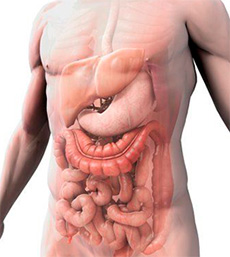 When the acute phase of the poisoning is over, some symptoms that indicate indigestion remain. The change in the normal intestinal microflora by quantity or qualitative composition is called dysbacteriosis. It is characterized by the following features:
When the acute phase of the poisoning is over, some symptoms that indicate indigestion remain. The change in the normal intestinal microflora by quantity or qualitative composition is called dysbacteriosis. It is characterized by the following features:
After taking antibiotics, restoring healthy intestinal flora will not be a simple process. This can take up to 6 months and will require appropriate measures for the development of healthy bacteria. This can be done by eating foods with live cultures of bacteria, such as yogurt or cottage cheese, kefir, products that are extremely beneficial for the stomach.
Some people prefer pickled cucumber or cabbage. These foods store extremely beneficial bacteria for the intestines, but many of the bacteria that contain foods are killed by stomach acids. Probiotics can provide a higher dose of bacteria in the intestines, where they are needed.
- loose stools;
- constipation;
- bloating;
- unpleasant smell of feces;
- poor digestion of food;
- weak pain in abdomen.
Dysbacteriosis can develop after the use of antibiotics and other antibacterial agents.
Recovery of the intestines with diet
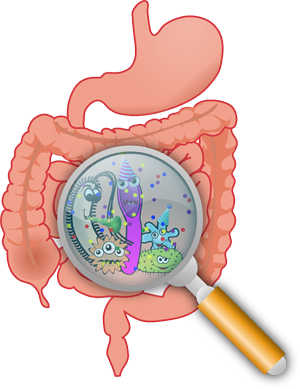 How to restore the intestine after poisoning? In light cases, it is enough to stick to a reasonable diet. Nature has provided a lot of products that colonize the gut with beneficial microbes. Also, diet food will help restore the mucous membrane and creates conditions for the reproduction of normal microflora. General rules for diet after food poisoning:
How to restore the intestine after poisoning? In light cases, it is enough to stick to a reasonable diet. Nature has provided a lot of products that colonize the gut with beneficial microbes. Also, diet food will help restore the mucous membrane and creates conditions for the reproduction of normal microflora. General rules for diet after food poisoning:
The best probiotics are those with increased resistance to acids or those that are supplied as tablets in capsules with a protective coating, which dissolves after the tablet has passed through the stomach and into the intestines. Yogurt is probably the most famous probiotic food and is definitely one of the most recommended foods after taking antibiotics.
In addition, lactobacilli in the form of bifidobacteria are sometimes added during or after this bacterial culture development process. Not all yogurts contain probable bacteria. As a rule, probiotic cultures used to create yogurt remain alive and active in the final product, but pasteurization and other processes used to extend the shelf life of yogurt can kill some of the healthy probiotic bacteria for intestinal flora.
- digestible food;
- small portions 5–6 times a day;
- do not wash down food with water;
- avoid eating simple carbohydrates;
- eat foods rich in fiber: vegetables, fruits;
- the bread must be stale or dried;
- can not be fatty and fried.
Also a bad effect on the intestinal microflora have coffee, alcohol, sweet soda.
For example, in the United States of America, the National Yoghurt Association has created a logo in which yoghurts containing live and active probiotic bacteria can be identified. Along with yogurt, you can also use kefir or san. If you are still in antibiotic treatment, do not take them when consuming probiotic products or supplements.
Mortar cabbage is produced by small cutting of seedlings that have been fermented in their own juice by various lactic acid producing bacteria. Depending on the area you eat, you can consume a certain amount of healthy bacteria for the stomach, which in turn will diversify your intestinal flora.
Intestinal products
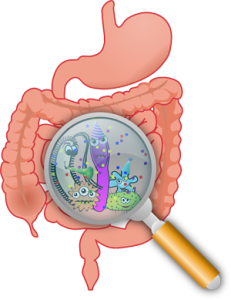 What can restore the intestinal microflora after poisoning? First of all, these are products containing lacto-and bifidobacteria:
What can restore the intestinal microflora after poisoning? First of all, these are products containing lacto-and bifidobacteria:
- fermented milk products - fresh homemade yogurt, kefir, various bifidokefiry and yoghurt are useful;
- sauerkraut and pickle from her;
- wet apples;
- bread kvass.
Other products create a favorable environment for the development of those bacteria that have survived in the intestine, and also prevent the reproduction of harmful microbes:
- dried fruits;
- garlic, onion;
- herbal teas with mint, currant and raspberry leaves, chamomile, and St. John's wort;
- wheat bran and flour;
- chicory, Jerusalem artichoke, dandelion leaves;
- fresh vegetables and fruits, greens.
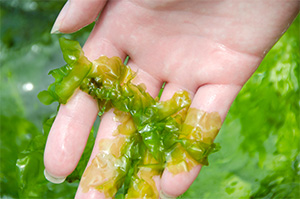 The answer to the question of how to restore bowel function after poisoning may be some dietary supplements. They contain a substrate on which beneficial microbes will actively proliferate.
The answer to the question of how to restore bowel function after poisoning may be some dietary supplements. They contain a substrate on which beneficial microbes will actively proliferate.
- seaweed - seaweed, kelp;
- brewer's yeast - not to be confused with regular food yeast for the dough.
In cases where the poisoning is severe, or strong antibiotics are used, it is better to use drugs.
Medicines
All drugs to restore the intestinal microflora after poisoning can be divided into two groups.
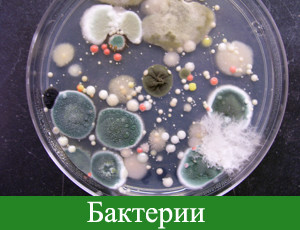
Probiotics
Drugs from the probiotic group may contain one or more cultures. Such agents are produced in the form of tablets, capsules and rectal suppositories.
Here is a list of some drugs that can restore the intestines after poisoning.
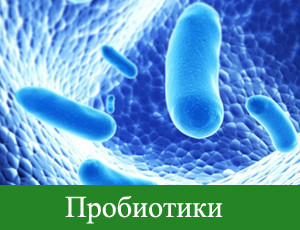
Monopreparations are incompatible with taking antibiotics, will not help with complex dysbacteriosis, they have age restrictions.
Probiotics involving several cultures of bacteria:
- "Florin Forte" - contains bifidobacteria and lactobacilli. Can be used for children. Store the drug must be in the refrigerator.
- "Linex". Includes three types of bacteria (lacto-and bifidobacteria, enterococci). It can be combined with the use of antibiotics, there is no age limit, suitable for nursing and pregnant women.
- "Bifikol" - contains bifidobacteria and E. coli.
Another group of probiotics is microbes that are not normal representatives of the intestinal biocenosis. They form spore forms, therefore, they are extremely resistant to the aggressive environment of the stomach. Once in the intestine, bacteria multiply rapidly and inhibit the growth of pathogenic microbes. They live in the body for about a month, then are gradually excreted, giving way to normal microflora. This class includes drugs "Bactisubtil" (Bacillus cereus) and "Sporobacterin". They are successfully used to treat diarrhea.
Probiotics have their limitations. They are carefully prescribed to people with impaired immunity and patients prone to allergic reactions.
Prebiotics
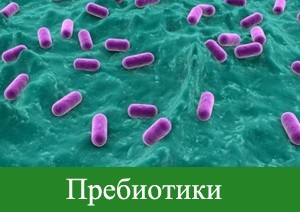 Prebiotics will help restore the intestinal microflora after poisoning. Preparations of this group contain lactulose, which passes into the large intestine and is digested there, creating a nutrient medium for the development of beneficial bacteria. Prebiotics include:
Prebiotics will help restore the intestinal microflora after poisoning. Preparations of this group contain lactulose, which passes into the large intestine and is digested there, creating a nutrient medium for the development of beneficial bacteria. Prebiotics include:
- "Prelaks";
- "Inulin";
- Laktofiltrum;
- "Lactusan";
- Duphalac;
- "Portalak".
These drugs can be taken to children, pregnant and lactating women. They do not need to be stored in the refrigerator, can be combined with the reception of antibiotics. You can not assign people with intolerance to fructose and galactose, intestinal obstruction, bleeding of the rectum. Patients with diabetes need to consult a doctor.
There are complex preparations containing live bacteria and a substrate for their reproduction. They are compatible with antibiotics and most quickly restore the microflora of the digestive tract. These include:
- "Bifiform" - contains bifidobacteria, E. coli, enterococci;
- "Hilak Forte" - lactobacilli and lactic acid, and among other things, the drug restores the normal pH in the stomach.
How to restore the intestinal flora after poisoning? First of all, it is desirable to stick to a sparing diet for 2-4 weeks, as much time will be required for the normalization of microflora. Replenishment of microbes occurs at the expense of lactic and fermented foods. Also useful food, creating favorable conditions for the reproduction of beneficial bacteria. For quick recovery or in severe cases, as well as after a course of antibiotics, it is recommended to take pharmaceutical preparations - drugs from the group of probiotics and prebiotics. The duration of treatment depends on the degree of indigestion and ranges from 7 to 21 days.

